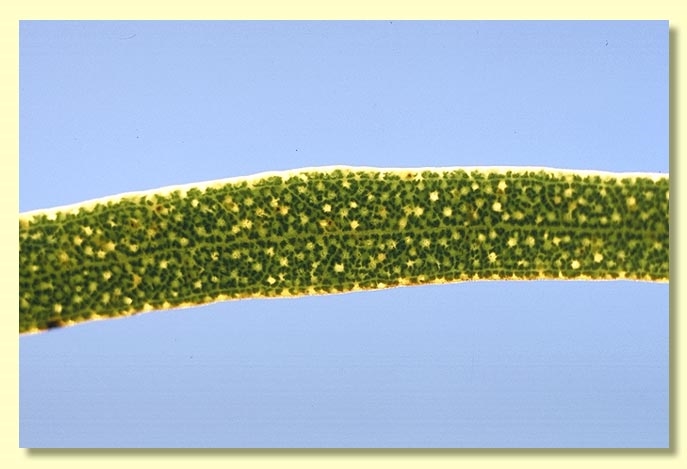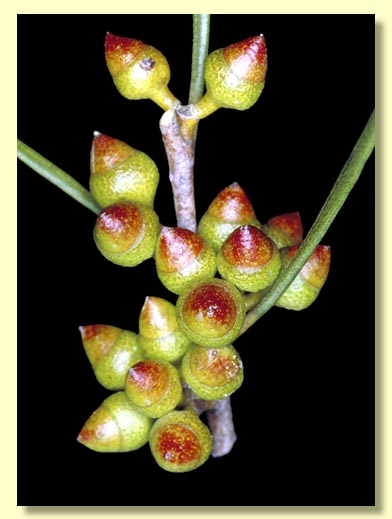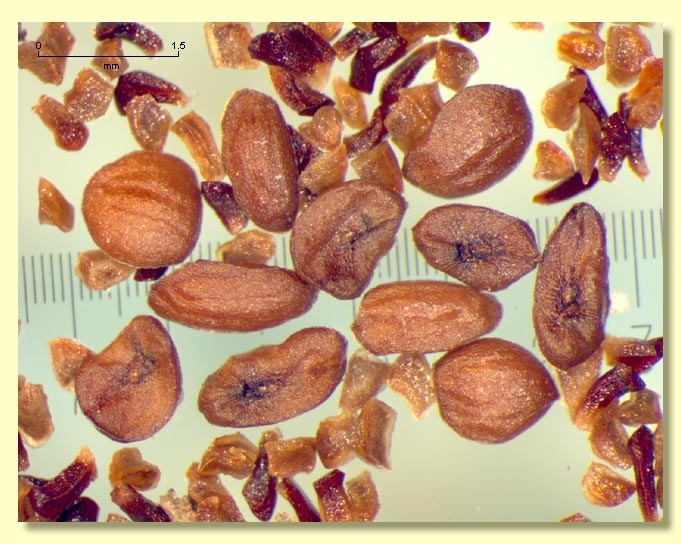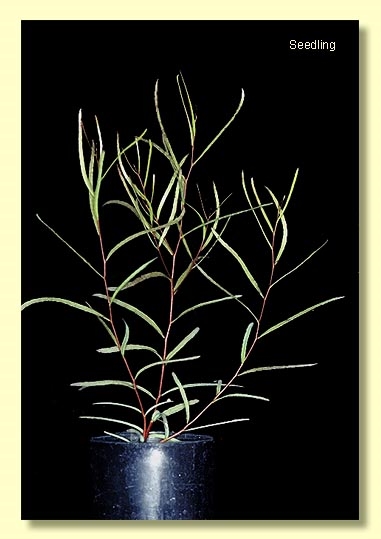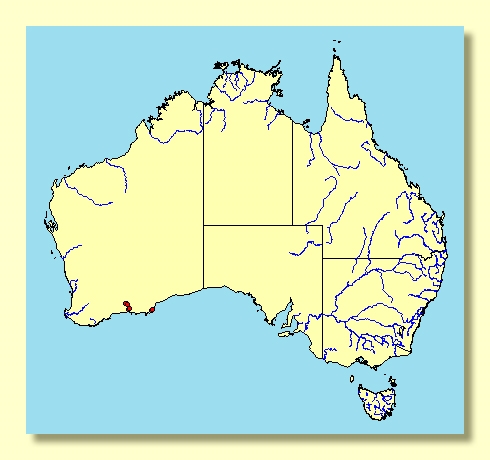Euclid - Online edition
Eucalyptus angustissima
Eucalyptus | Symphyomyrtus | Bisectae | Destitutae | Angustissimae | Oviformes
Bark smooth throughout, mottled pale grey, pale brown, orange and whitish, ribbons sometimes present.
Branchlets lacking oil glands in the pith.
Juvenile growth (coppice or field seedlings to 50 cm): stems rounded in cross-section; juvenile leaves sessile to shortly petiolate, alternate, linear, 4.5–8 cm long, 0.3–0.4 cm wide, lower leaves dull, bluish green, upper leaves green and glossy.
Adult leaves erect, alternate, sessile or with petioles to 0.2 cm long; blade linear, (5.5)7–11.5 cm long, 0.15–0.3(0.4) cm wide, base tapering to petiole, margin entire, apex pointed and sometimes uncinate, concolorous, dull or glossy, green, midrib the only prominent vein (dried leaves appear channelled), side-veins and reticulation obscure, oil glands intersectional or obscure.
Inflorescence axillary, single, peduncles 0.2–0.4 cm long, buds 7 per umbel, pedicellate (pedicels 0.1–0.2 cm long). Mature buds ovoid (egg-in-eggcup) with hypanthium widest below the join with operculum, 0.5–0.7 cm long, 0.3–0.5 cm wide, scar present, operculum rounded to conical, stamens inflexed, anthers oblong to reniform, versatile, dorsifixed, dehiscing by short lateral slits, style long, straight, stigma more or less blunt, locules 3, the placentae each with 4 vertical rows of ovules. Flowers creamy white.
Fruit pedicellate to sometimes sessile (pedicels 0–0.2 cm long), broadly and shallowly cupular to hemispherical or flattened-globose and swollen below rim, 0.3–0.5 cm long, 0.5–0.8 cm wide, disc level, valves 3, at rim level.
Seeds tan, 1.0–2.5 mm long, flattened-ovoid, dorsal surface ± smooth, at times slightly furrowed, hilum ventral.
Cultivated seedlings (measured at ca node 10): cotyledons Y-shaped (bisected); stem rounded in cross-section, smooth or slightly warty; leaves more or less sessile, the lower nodes sometimes crowded, opposite for 5 to 7 nodes then alternate, linear, ± thickened and incurved, 6.5–9.5 cm long, 0.2–0.4 cm wide, green, margin may be entire or irregular.
Flowering has been recorded in January and October.
A mallee endemic to Western Australia. The species occurs in southern coastal and subcoastal areas from north of Esperance to Israelite Bay. The bark is smooth and the crown leaves are erect, dull to glossy, green. The species is notable for the narrowest adult leaves of all eucalypts.
Eucalyptus angustissima has leaves to 0.4 cm wide whilst the related species E. quaerenda, E. misella and E. foliosa have leaves wider than this.
In the classification of Brooker (2000) Eucalyptus angustissima belongs in Eucalyptus subgenus Symphyomyrtus section Bisectae subsection Destitutae because buds have two opercula, cotyledons are Y-shaped and branchlets lack oil glands in the pith. Within this subsection E. angustissima is closely related to only three other species, viz. E. quaerenda, E. foliosa and E. misella, which together form series Angustissimae subseries Oviformes, characterised by the erect leaves, egg-in-eggcup buds and stamens with more or less reniform anthers. The habitat of E. angustissima is similar to that of E. quaerenda and E. foliosa, being white sands in the vicinity of salt lakes, whilst E. misella occurs away from salt lakes on sand with gravel high in the profile.



